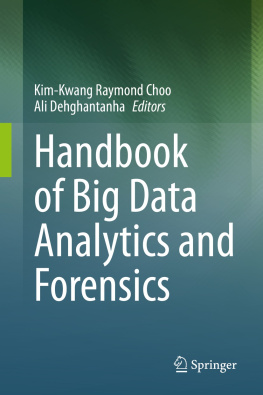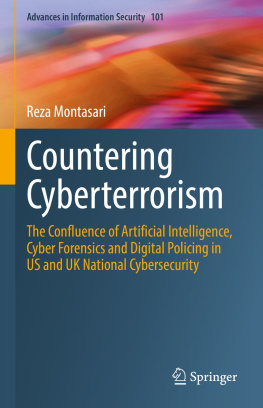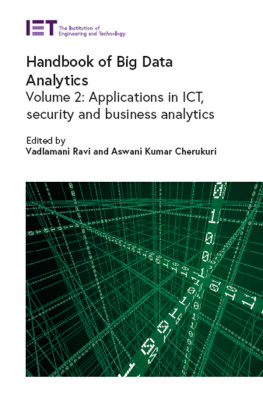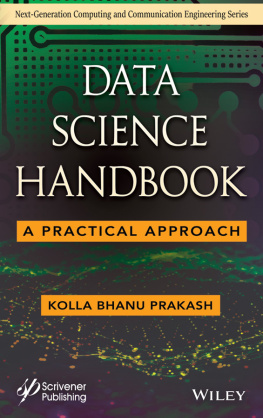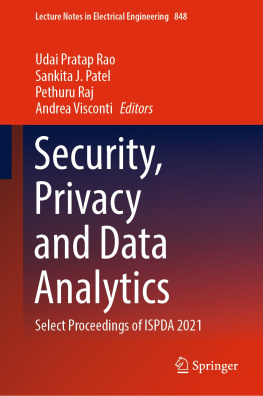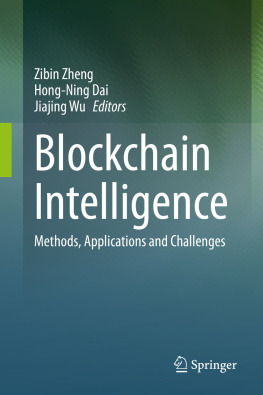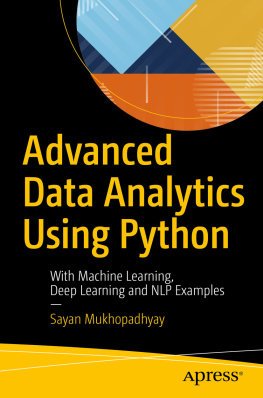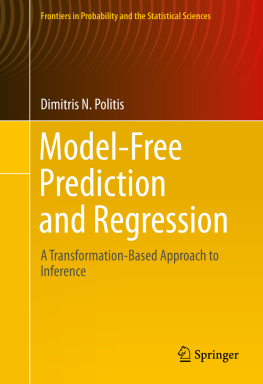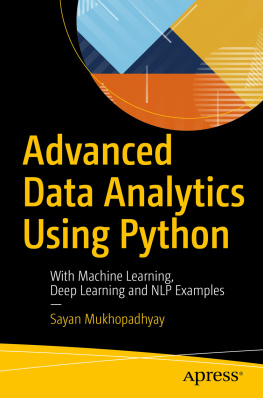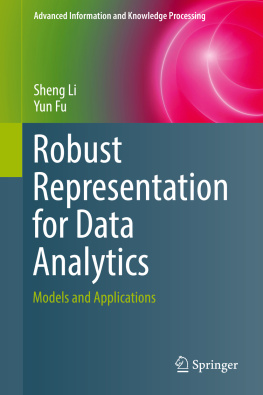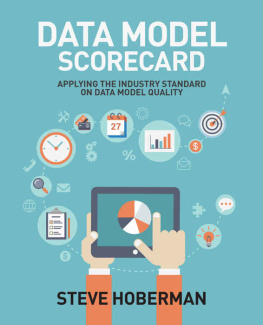Kim-Kwang Raymond Choo (editor) - Handbook of Big Data Analytics and Forensics
Here you can read online Kim-Kwang Raymond Choo (editor) - Handbook of Big Data Analytics and Forensics full text of the book (entire story) in english for free. Download pdf and epub, get meaning, cover and reviews about this ebook. year: 2021, publisher: Springer, genre: Politics. Description of the work, (preface) as well as reviews are available. Best literature library LitArk.com created for fans of good reading and offers a wide selection of genres:
Romance novel
Science fiction
Adventure
Detective
Science
History
Home and family
Prose
Art
Politics
Computer
Non-fiction
Religion
Business
Children
Humor
Choose a favorite category and find really read worthwhile books. Enjoy immersion in the world of imagination, feel the emotions of the characters or learn something new for yourself, make an fascinating discovery.
- Book:Handbook of Big Data Analytics and Forensics
- Author:
- Publisher:Springer
- Genre:
- Year:2021
- Rating:4 / 5
- Favourites:Add to favourites
- Your mark:
Handbook of Big Data Analytics and Forensics: summary, description and annotation
We offer to read an annotation, description, summary or preface (depends on what the author of the book "Handbook of Big Data Analytics and Forensics" wrote himself). If you haven't found the necessary information about the book — write in the comments, we will try to find it.
This handbook discusses challenges and limitations in existing solutions, and presents state-of-the-art advances from both academia and industry, in big data analytics and digital forensics. The second chapter comprehensively reviews IoT security, privacy, and forensics literature, focusing on IoT and unmanned aerial vehicles (UAVs). The authors propose a deep learning-based approach to process clouds log data and mitigate enumeration attacks in the third chapter. The fourth chapter proposes a robust fuzzy learning model to protect IT-based infrastructure against advanced persistent threat (APT) campaigns. Advanced and fair clustering approach for industrial data, which is capable of training with huge volume of data in a close to linear time is introduced in the fifth chapter, as well as offering an adaptive deep learning model to detect cyberattacks targeting cyber physical systems (CPS) covered in the sixth chapter.
The authors evaluate the performance of unsupervised machine learning for detecting cyberattacks against industrial control systems (ICS) in chapter 7, and the next chapter presents a robust fuzzy Bayesian approach for ICSs cyber threat hunting. This handbook also evaluates the performance of supervised machine learning methods in identifying cyberattacks against CPS. The performance of a scalable clustering algorithm for CPSs cyber threat hunting and the usefulness of machine learning algorithms for MacOS malware detection are respectively evaluated.
This handbook continues with evaluating the performance of various machine learning techniques to detect the Internet of Things malware. The authors demonstrate how MacOSX cyberattacks can be detected using state-of-the-art machine learning models. In order to identify credit card frauds, the fifteenth chapter introduces a hybrid model. In the sixteenth chapter, the editors propose a model that leverages natural language processing techniques for generating a mapping between APT-related reports and cyber kill chain. A deep learning-based approach to detect ransomware is introduced, as well as a proposed clustering approach to detect IoT malware in the last two chapters.
This handbook primarily targets professionals and scientists working in Big Data, Digital Forensics, Machine Learning, Cyber Security Cyber Threat Analytics and Cyber Threat Hunting as a reference book. Advanced level-students and researchers studying and working in Computer systems, Computer networks and Artificial intelligence will also find this reference useful.
Kim-Kwang Raymond Choo (editor): author's other books
Who wrote Handbook of Big Data Analytics and Forensics? Find out the surname, the name of the author of the book and a list of all author's works by series.

